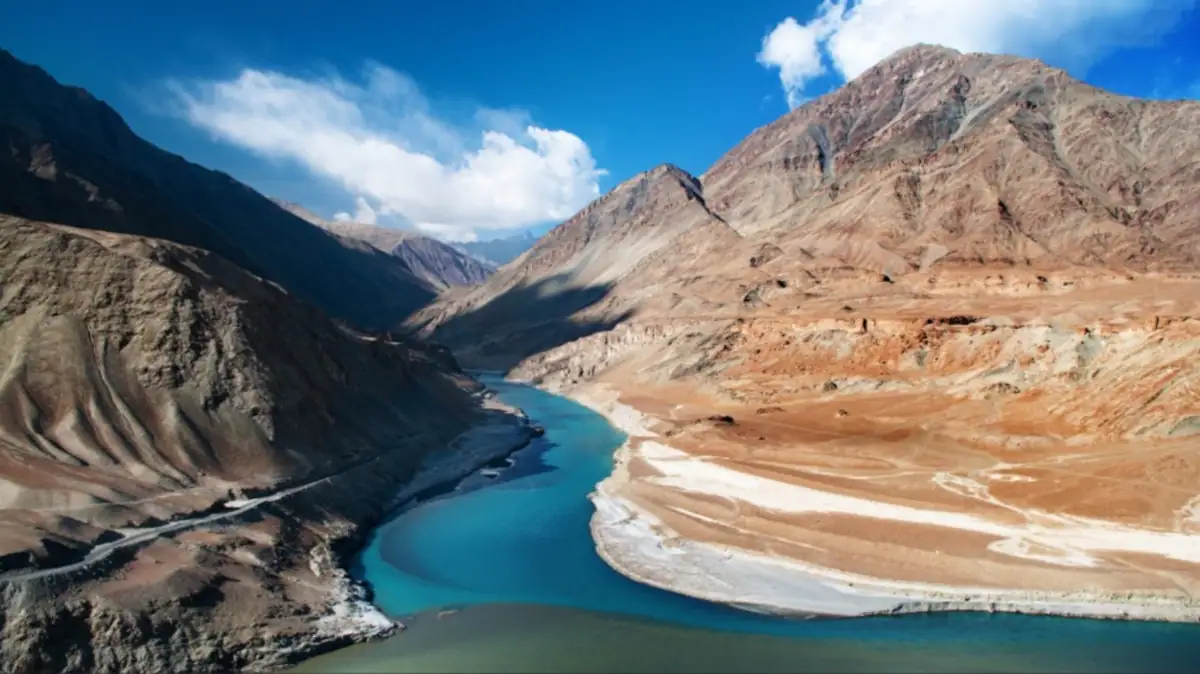Monsoon Miracle Or Meteorological Disaster? Southwest Winds Defy Himalayan Barrier, Reach Tibet
By Zee Media Bureau,Zee News
Copyright india

A rare meteorological phenomenon in 2025 has been drawing the focus of researchers: the humid winds of the Southwest Monsoon (SWM) seem to have crossed over the Himalayan mountain chain and extended to Tibet. This event is possibly connected with climate change and global warming that are drastically reshaping South Asian weather patterns. Though the Himalayas normally serve to block monsoon moisture, satellite imagery in this year showed that moisture seeped into Tibet. The Southwest Monsoon normally brings rains to India between June and September, bringing moisture from the Bay of Bengal and the Arabian Sea, which precipitates in India on meeting the Himalayas high peaks.The Himalayas usually keep these winds from entering Tibet, rendering the plateau dry. Tibet normally gets snow in the winter and spring months from Western Disturbances. Scientists, however, noted in the first week of September 2025 through satellite images that monsoon moisture had swept over Himachal Pradesh, Uttarakhand, and Ladakh, eventually reaching Tibet.According to news agency AajTak, Manish Mehta, a glaciologist at the Wadia Institute of Himalayan Geology, confirmed, Satellite maps clearly indicate that moisture has passed over the Himalayas towards Tibet. This is an unprecedented meteorological event, since the Himalayas generally serve as a barrier to moisture.Why This Change?Researchers feel that this phenomenon may be connected to climate change and global warming and credit it to a number of causes:Role of Western Disturbances: The 2025 monsoon season saw 19 Western Disturbances, a little more than normal, with three in the first week of September. Though normally active in winter, their enhanced activity during the monsoon period, along with the moist monsoon winds, most probably carried moisture over the Himalayas.Atmospheric Rivers: Roxy Mathew Koll, a researcher at the Indian Institute of Tropical Meteorology (IITM), Pune, elucidated that Western Disturbances or Atmospheric Rivers (that belong to the subtropical jet stream) have the capability to transport monsoon moisture over the Himalayas. More data needs to be analyzed to decide whether this event was very unusual.Impact of Global Warming: Increased temperatures around the world as a result of greenhouse gas emissions are changing seasonal processes. Decreased snow cover in the Himalayas and Tibet as a result of warming might be creating channels for moisture. Indian Institute of Technology (IIT), Bombay, Professor Raghu Murtugudde said that powerful winds at the base of the Himalayas lift up moisture, resulting in cloudbursts and possibly carrying moisture into Tibet.Himalayan Topography: Some scientists propose that lower-altitude corridors or passages in the Himalayas could have permitted moisture to enter Tibet. Topographic studies at a local level are important to comprehend this.Significance Of The EventMonsoon moisture penetration into Tibet represents a significant meteorological change with multiple possible causes and implications:Evidence of Global Warming: This phenomenon strongly suggests that global warming is essentially transforming weather patterns. The Himalayas, which have served as a monsoon barrier for centuries, now are facilitating moisture passage, possibly having an extensive effect on South Asian weather.Himalayan Disasters: The higher frequency of Western Disturbances in the 2025 monsoon caused an increase in heavy rain, flooding, and cloudbursts in the Himalayas. In the Uttarkashi district of Uttarakhand, floods in the villages of Dharaali and Harsil caused four casualties and 100 missing people.Tibetan Environment: Tibet is a dry place with minimal rainfall. If monsoon moisture begins to reach it on a regular basis, its environment—such as plants, animals, and water supply—would dramatically change.Effect on Agriculture and Water: Monsoon accounts for 80% of Indias rains that are crucial for farming. If water is redirected over the Himalayas to Tibet, India would face decreased rainfall, affecting agriculture and water supply.Scientists OpinionsScientists consider this event unusual, but more research is needed to understand its long-term effects. Roxy Mathew Koll stated, We need to determine if this is an anomalous event or a permanent effect of climate change. Raghu Murtugudde suggested that an analysis of Himalayan topography based on satellite images is necessary to understand the moisture pathways.Climate Change And Western DisturbancesThe 2025 monsoon season experienced 19 Western Disturbances, which is higher than normal. Five were in June, five in July, five in August, and three more in the first week of September. These disturbances usually cause rain or snow in winter but are not common during the monsoon. Scientists feel that these patterns are induced by global warming. Increased temperatures in West Asia and the Mediterranean are moving the jet stream (high-speed air streams) northwards, which may be the cause for transporting monsoon moisture over the Himalayas.Implications In FutureHimalayan Floods and Landslides: The meeting of Western Disturbances and monsoon moisture can trigger more frequent heavy rain, floods, and cloudbursts in the Himalayas, which will be dangerous for local populations and the environment.Moisture Effect on Tibet: If Tibet starts receiving regular rainfall, its dry climate may shift, influencing glacier melt and river runoffs.Monsoon Changes in India: Shunting of moisture to Tibet would decrease rainfall over regions of India, which would have implications for agriculture and water supply.Climate Models Required: The scientists will have to devise new climate models that can comprehend these changes and forecast future circumstances.ALSO READ | Nepal Protests 2025: Hilton Hotel Kathmandu Burnt In Gen Z Anti-Corruption Unrest – Videos And Updates



